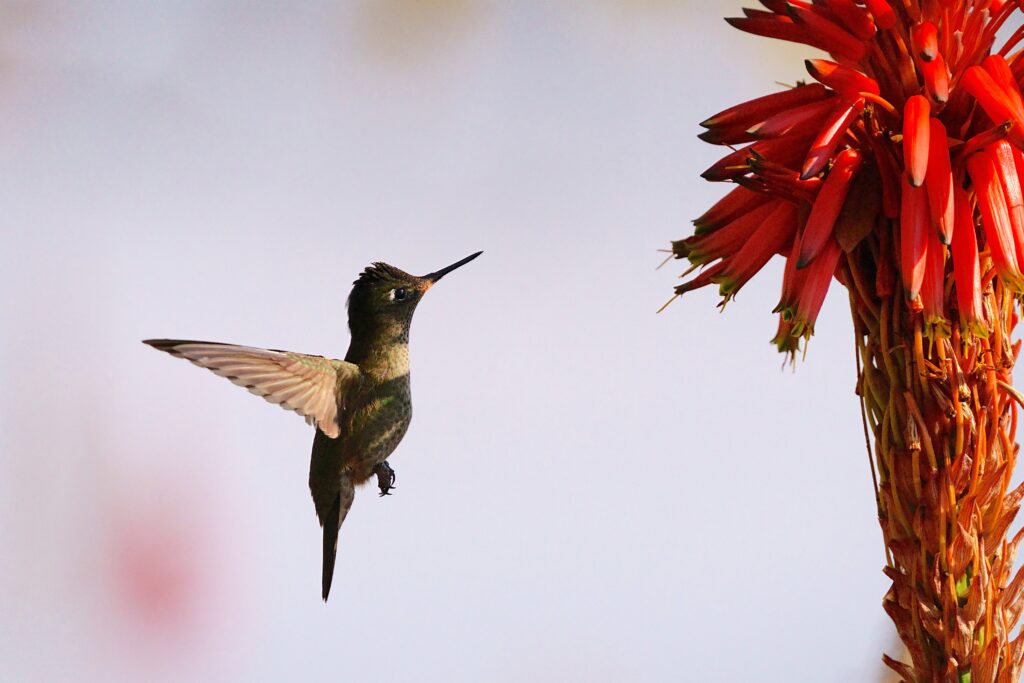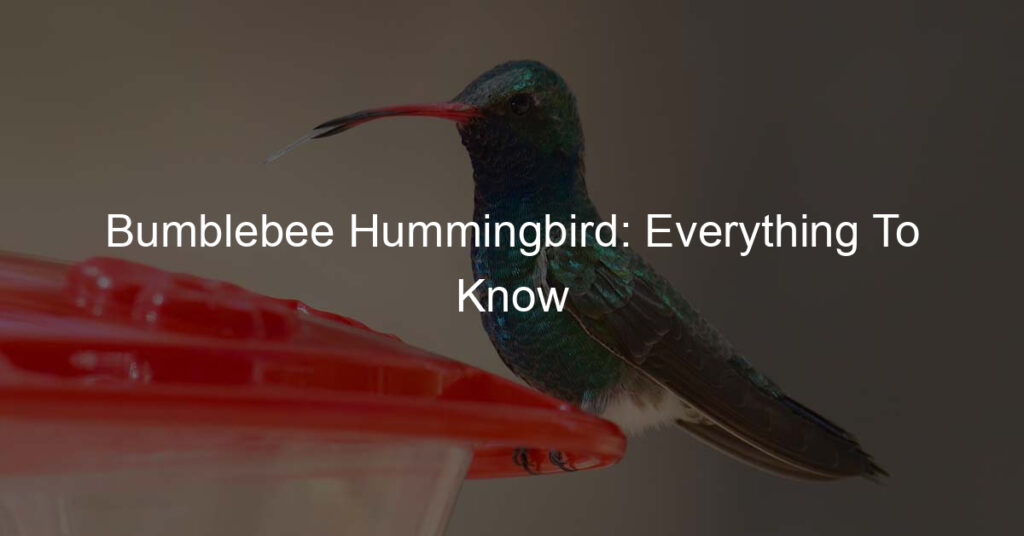Have you ever heard of the bumblebee hummingbird? It’s an amazing, tiny creature that can be found in Mexico and Central America. The bumblebee hummingbird is the smallest bird in the world, weighing less than two grams and measuring just over two inches in length! Let’s dive into what makes this bird so special.
Where Does Bumblebee Hummingbird Live?
The bumblebee hummingbird is found in Mexico and Central America, ranging from southern Mexico all the way down to Costa Rica. They are generally found in tropical deciduous forests or mountain scrublands, although they can also be seen in lightly wooded areas or open fields.
The bumblebee hummingbird typically nests in trees or shrubs that provide adequate cover and protection from predators. World land trust has adopted a bumble bee hummingbird conservation project to protect the species from extinction. The project will focus on protecting their natural habitats and providing them with nesting materials.
Read more: How Do Hummingbirds Feed Their Babies?
Habitat & Diet
The native habitat of the Bumblebee hummingbird is mainly found in Cuba, but they can sometimes be spotted in other parts of North America or Mexico as well. They prefer tropical climates and inhabit open woodlands near streams or rivers where they feed on nectar from flowers and insects like bees and wasps. This diet helps them maintain their high level of energy which allows them to flutter their wings at an astonishing rate of 80 times per second.
The host plants that provide nectar for hummingbirds to feed upon include thistles, salvias, and honeysuckles. The metallic bronze-green color of the bumblebee hummingbird helps them to blend in with their natural surroundings. They are also found feeding on tree sap and other sweet sources, such as fruits and nectars.
Read More: How To Hand Feed Hummingbirds
Appearance And Habits

The bumblebee hummingbird has a long, thin bill (around 0.3 inches) that is pointed at the tip, as well as black eyes and a greenback. Its feathers are generally brown-black on its back with yellowish-green coloration on its throat and belly. The wings are dark brown or black with white stripes along their edges.
They have claws that enable them to perch on twigs and branches for feeding. Additionally, they have a characteristic flight pattern that involves hovering in one spot for several seconds before flying off again quickly. Tail cocked up and head facing forwards, they flutter their wings at an astonishing rate of 80 times per second.
Read More: How To Make A Hummingbird House
The Incredible Size
As its nickname implies, the Bumblebee hummingbird is quite small — about 2 inches long. That makes it one of the smallest birds on earth and even smaller than an average bumblebee. Despite its minuscule size, what it lacks in stature it makes up for in vibrant colors.
Several female Bumblebee hummingbirds have greenish-gray feathers on their backs with white undersides and a slightly duller hue around their throats and heads. The males are much brighter in color; they have colorful iridescent feathers that range from green to purple, depending on how they catch the light. Both genders have beautiful orange-red beaks that add to their charm.
What Is A Hummingbird Moth?
It is a common name for moths of the family Sphingidae. The family includes some of the largest moths in the world, notably the hawk moths and the Hummingbird Hawk-Moth or “Hummingbird Moth”. These moths fly during the day, just like hummingbirds. They are very attracted to flowers and can hover for long periods of time, much like hummingbirds. Bumblebee moth larvae feed on plants such as willow and poplar.
Read More: Do Hummingbirds Chirp?
Cultural Significance
The bumblebee hummingbird is an important species across Mexican culture; it often appears on national coins and stamps as well as is featured in traditional music and artwork throughout Mexico and Central America. In fact, other hummingbird species were even named after a legendary Aztec warrior known as Quetzalcoatl. Who was said to have taken the form of a hummingbird during his travels through Mexico?
Fun Facts
Let’s take a closer look at 8 fun facts about bumblebee hummingbirds.
1. They’re Tiny: Despite being the smallest bird in the world, bumblebee hummingbirds are very strong for their size. They weigh less than one gram and measure around two inches in length. That’s smaller than your thumb.
2. They Flap Their Wings Fast: These birds can flap their wings up to 80 times per second to stay airborne and generate lift so they can fly vertically or hover in one place for long periods of time.
3. They Can Fly Over Mountains: Bumblebee hummingbirds are great fliers and have been known to fly over mountains that are 13,000 feet high!
4. They Live In Mexico & Central America: While they may not be as common as other species of birds, bumblebee hummingbirds are found throughout Mexico and Central America including Mexico City, Guatemala City, El Salvador, Honduras, Nicaragua, Costa Rica, and Panama.
5. They Have A Long Lifespan: Bumblebee hummingbirds have been known to live up to 10 years in captivity with proper care – much longer than most other species of birds which typically only live between one and five years in captivity!
6. They Eat Insects & Nectar From Flowers: As you might expect from such a small bird, bumblebee hummingbirds feed on insects such as flies and spiders as well as nectar from flowers like hibiscus and lantana.
7. They Nest In Trees & Rocks: Bumblebee hummingbird nests can be found in trees or rocks depending on the area where they’re living or migrating at any given time of year – usually from April through August each year when there is plenty of food available for them to eat!
8. Their Migration Patterns Are Complex & Changeable: These birds migrate seasonally between different areas throughout Mexico and Central America depending on where food sources are located at various times during their migration cycle – making them difficult to track scientists.
Read More: How Often Do Hummingbirds Sleep?
Wrap Up
The bumblebee hummingbird is an amazing species to observe and admire. From its incredible size, strength, and speed to its cultural significance in Mexican culture, it’s no wonder why this tiny bird has become a symbol of power, beauty, and perseverance in many cultures around the world. Despite its small stature, the bumblebee hummingbird is an incredibly powerful creature that should be respected and protected for generations to come.







